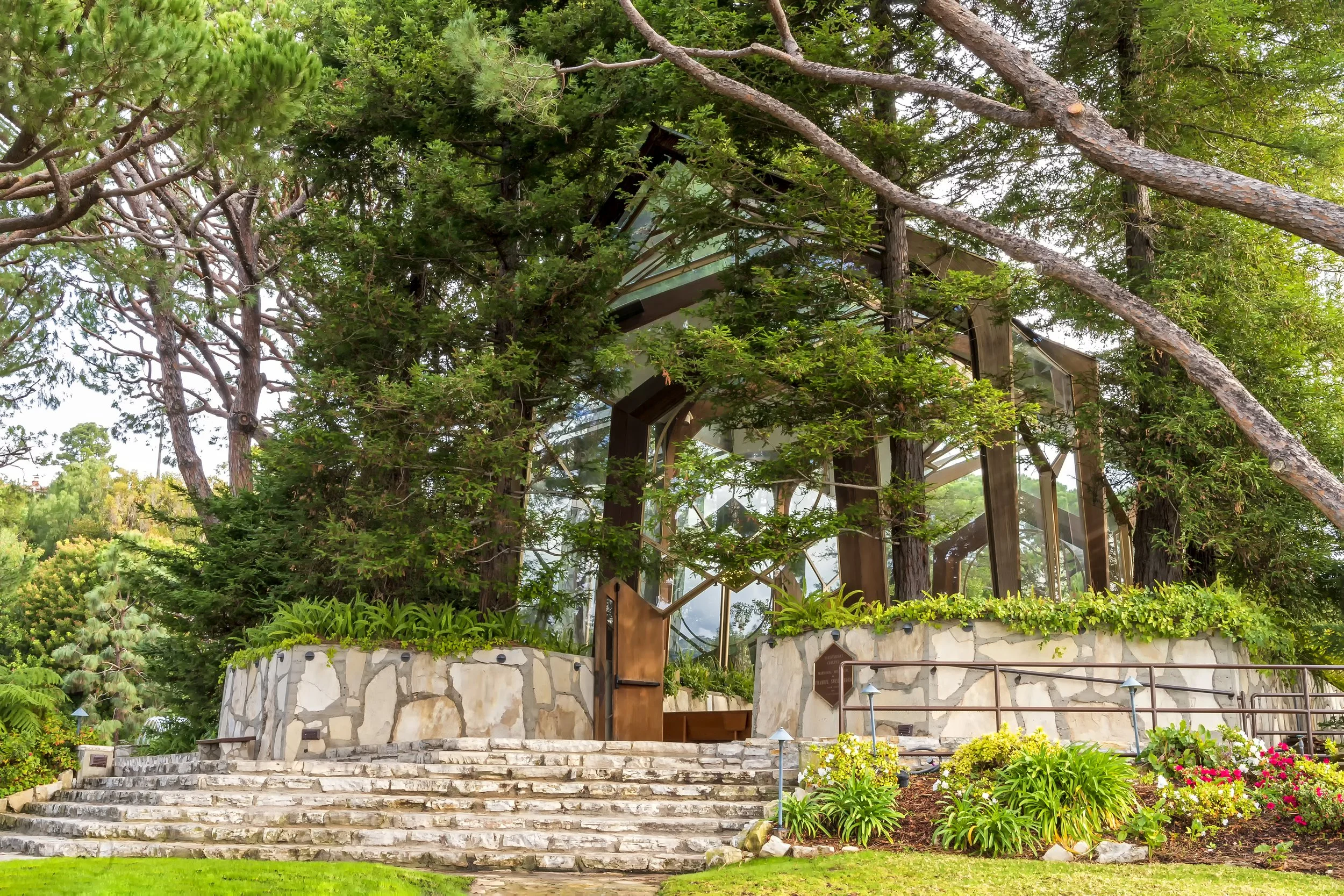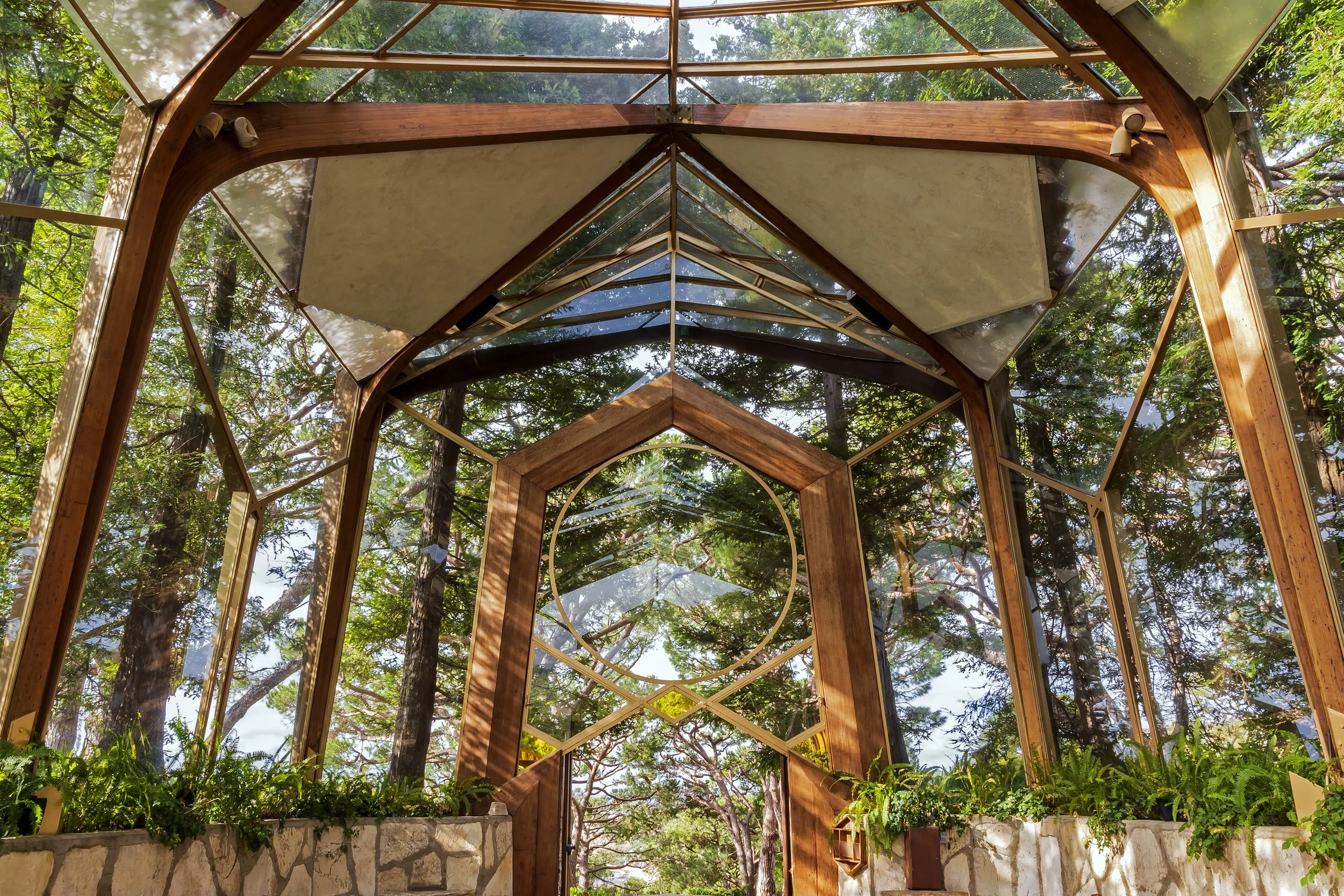Iconic Wayfarer's Chapel: A Sacred Sanctuary Elevated to National Historic Landmark Status By Writer and Contributor Emily McGinn
Wayfarers Chapel has finally achieved of its years-long pursuit of a National Landmark Designation.
Dr. David Brown, a reverend at Wayfarers Chapel, has spearheaded the effort, which started seven years ago. “It began with the decision and commitment to make this a priority and put some time and energy and money into it, so we did that,” Brown said. To gain a National Historic Landmark designation, the inquiry must first be reviewed at the state level before advancing to the federal level. Multiple committees review the request through the National Park System and the Department of the Interior to determine if the site should receive a recommendation to become a designated National Historic Landmark. In the final stage, the Secretary of the Interior reviews the case and decides whether or not to designate the site as a National Historic Landmark.
Brown had been working with the Architectural Resources Group, a company that specializes in historic preservation, throughout the long research and submission process. Wayfarers Chapel has now received approval from the Secretary of the Interior. Wayfarers Chapel has been a landmark of the Palos Verdes community, over 70 years since its first service on Mother’s Day in 1951. Rev. Dan Burchett describes the chapel as “a stunning architectural jewel” designed by Frank Lloyd Wright, Jr. as a glass chapel overlooking the ocean and surrounded by a grove of redwoods native to Northern California.
“Originally when Frank Lloyd Wright, Jr. designed this, he called it a Tree Chapel and the purpose for that was because it would be surrounded by evergreens and that you would be in nature as you sat in the structure that had glass for walls,” Burchett said. “It was supposed to induce a greater sense of being in union for nature.” A National Historic Landmark designation should provide support, both financially and otherwise, for the preservation of the chapel in years to come. Burchett also believes it will add to the mission that the chapel already represents for its congregation as well as others who pass through.
“It was never a monetary thought that we had in mind,” Burchett said. “It was more that the structure itself and the philosophical approach to spirituality that this church represents and is something that is meant to be embraced by all people.” The 72-year-old chapel also has a full restoration on the horizon, which is in the planning stages. However, this restoration — as well as the preservation of the chapel — is facing new challenges in light of the recent uptick in land movement in the Rancho Palos Verdes area.
Wayfarers Chapel lies in one of the three areas affected by the landslide complex on the Peninsula. As a result, the chapel staff has been working with city and state agencies to distinguish the best steps to implement to increase the stability of the property. For example, the chapel will be inserting a new drain system to decrease the water in the land and reduce the likelihood of further movement.
Right now, Brown said that addressing the land movement issue takes priority. “We do invite prayers for this because it is a pretty challenging and extreme situation,” Brown said. “We do hope we can get the movement to a minimum, further the National Historic Landmark and secure this for the next generation to come.”
This prestigious recognition places Wayfarers Chapel alongside renowned sites such as the Eames House in Pacific Palisades, the Gamble House in Pasadena, Watts Towers, and several other iconic locations within Los Angeles that hold the distinction of being national landmarks.
For more information about Wayfarer’s Chapel visit the website
Images courtesy of Steve Tabor.
Emily McGinn: A Dedicated Journalist
Fueled by passion and curiosity, Emily McGinn is a fervent journalist whose heart beats for truth and creativity. As a graduate of California Baptist University, Emily’s academic voyage is adorned with rich interests in environmental science, political science, and graphic design. Her portfolio is a mosaic of hard work and dedication, evidenced by a repertoire of content that stands as a testament to her journalistic commitment and academic pursuits.
Emily doesn’t just chase stories; she seeks the truth with a thoughtful blend of accuracy, respect, and diligence. Her journalism transcends mere reporting, reflecting a meticulous effort to maintain integrity and excellence in every piece. Inspired by a profound respect for her craft, Emily is unafraid to push boundaries, perpetually aiming to enhance the quality of her work.
Experimentation and innovation light up Emily’s journey, especially in the realm of design. With an artistic flair, she loves exploring the vibrant intersections of journalism and graphic design, continuously experimenting to breathe visual life into stories and publications.
In Emily's world, journalism is not merely a career choice, but a calling—a space where passion meets purpose, and stories are crafted with care and conscience. In the garden of journalism, she continues to cultivate a bouquet of skills and experiences that resonate with her dedication to truth, creativity, and excellence.







